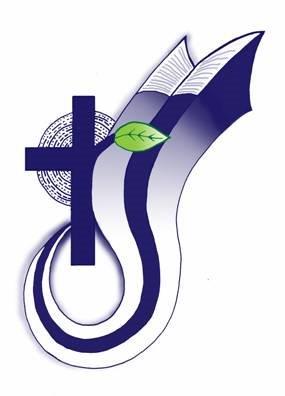Saint Andrew
Saint Andrew is the patron saint of Scotland, Greece and Russia and was Christ's first disciple.
There are around 600 pre-Reformation churches in England named after Saint Andrew, in contrast to Scotland's handful of churches of all denominations named after the saint. Nevertheless, it was Scotland that adopted Andrew as its patron - probably because, Saint Andrew being the brother of Saint Peter, it gave the Scots considerable political leverage with the Pope in pleading for help against the belligerent English!
Andrew's life
In Greek Andrew means 'manly'. St. Andrew's biographical details are simple: he was born between AD 5 and AD 10 in Bethsaida, the principal fishing port of Palestine. His parents were Jona and Joanna; his brother was Simon. Jona, along with his business-partner and friend Zebedee and his sons James and John, was a fisherman.
Andrew had a strong sense of curiosity. He would have gone to the synagogue school at the age of five to study scripture and then astronomy and arithmetic.
Later, on the banks of the Jordan, Andrew met John the Baptist: he was the first disciple and the first apostle. It was he who brought the boy with the loaves and fishes to Jesus before the feeding of the five thousand.
According to the apocryphal 'Acts of Andrew' he is said to have travelled to Asia Minor and the Black Sea. In the city of Synope he is believed to have suffered great hardships and the house he was in was nearly burnt down. He returned twice more to Asia Minor and Greece, even travelling as far as Hungary, Russia and to the banks of the Oder in Poland.
In Greece, Andrew forced his way through a forest inhabited by wolves, bears and tigers. Finally, in Patras, he was given the choice of being offered as a sacrifice to the gods or being scourged and crucified. By his own request the cross was diagonal. He, like his brother Peter, felt himself unworthy to be crucified on the upright cross of Christ.
He hung for three days on the cross, fixed not by nails but by rope round his hands and feet. Even in his last agony, he continued to preach. So ended the life of Saint Andrew. What happened to his body, however, is the next part of the story.
Andrew's bones come to Scotland
How did the bones of Saint Andrew come to Scotland? There are two versions - the first a pious fable. In this, Saint Regulus (later known as Rule), a Greek monk and keeper of St Andrew's relics at Patras, was told in a vision to hide some of the relics until further instruction. A few days later, the emperor Constantine removed the remaining parts of Andrew's body to Constantinople.
An angel again appeared and told Rule to take the bones he had hidden and go west by ship. Wherever they were shipwrecked he should lay the foundations of a church. The angel foretold how pilgrims would travel to this shrine from all parts of the West to receive health of body and soul.
Saint Rule's ship was driven ashore by a storm onto the headland of Muckross in Fife, into the little village of Kilrymont (later St Andrews). Halfway between the Castle and the harbour is said to be Saint Rule's cell.
At the time Saint Rule landed, the Apostle appeared to the Pictish King, promising victory to his enemies. In gratitude, the King confirmed the dedication of St. Regulus Church to God and Saint Andrew.
This is, one suspects, an arresting fable that telescopes more mundane and complicated historical facts. A second (and probably more reliable) explanation says that the bones were brought to St Andrews about 732 AD by Acca, Bishop of Hexham (near Newcastle), a well known venerator of Saint Andrew.
Around the year 832AD (although some say 735 AD) the Northumbrian King Athelstane is said to have camped at what is now Athelstaneford in East Lothian, before his battle with the Picts under King Angus mac Fergus. Saint Andrew appeared to Angus in a dream and promised victory. During the battle, a saltire cross was seen in the sky, putting heart into the Scots (note, this was not jumbo-jet vapour trails or even necessarily a cloud formation!).
Athelstane was killed at the ford over the Cogtail burn. In gratitude, Angus gave gifts to the church of Saint Regulus at St Andrews. He then ordered the Cross of Saint Andrew to be the badge of the Picts.
However, this foundation story of a more stable kingdom in what would become Scotland is almost certainly modelled on the Roman Emperor Constantine the Great's victory at the Milvian Bridge, Rome in 312 AD at the banks of the River Tiber when he became convinced of the power of Christianity by seeing the symbol of Christ (the Chi Rho - the Greek letters Χ Ρ, the first letters of 'Christ') in the rays of the setting sun.
Whatever route the bones of Saint Andrew may have taken, we do know that in AD 908, the only bishopric in Scotland was transferred from Abernethy (the royal residence) to St Andrews. Subsequently, the town rapidly became famous as a pilgrimage site.
Saint Andrew was a 'networker' - a fisherman but also the one who brought the Gentiles (non-Jews) to Jesus and preached about him as far as the Black Sea. The saltire cross is a multiplication sign - reminding us that it was Saint Andrew who brought the little boy and his loaves and fishes to Jesus.
Saint Andrew's Day is November 30.





